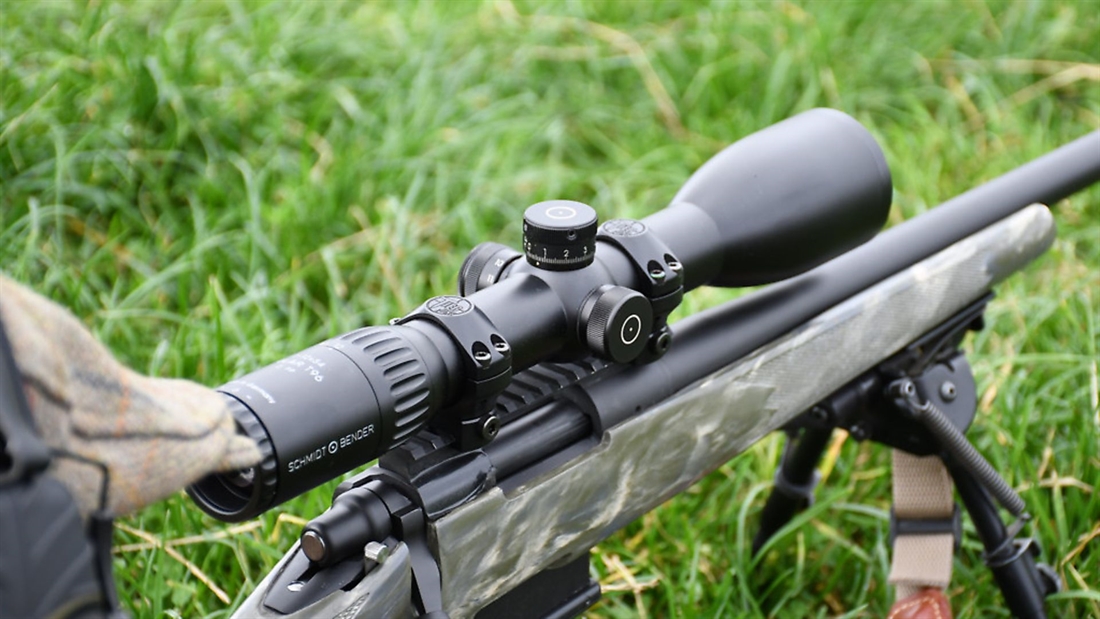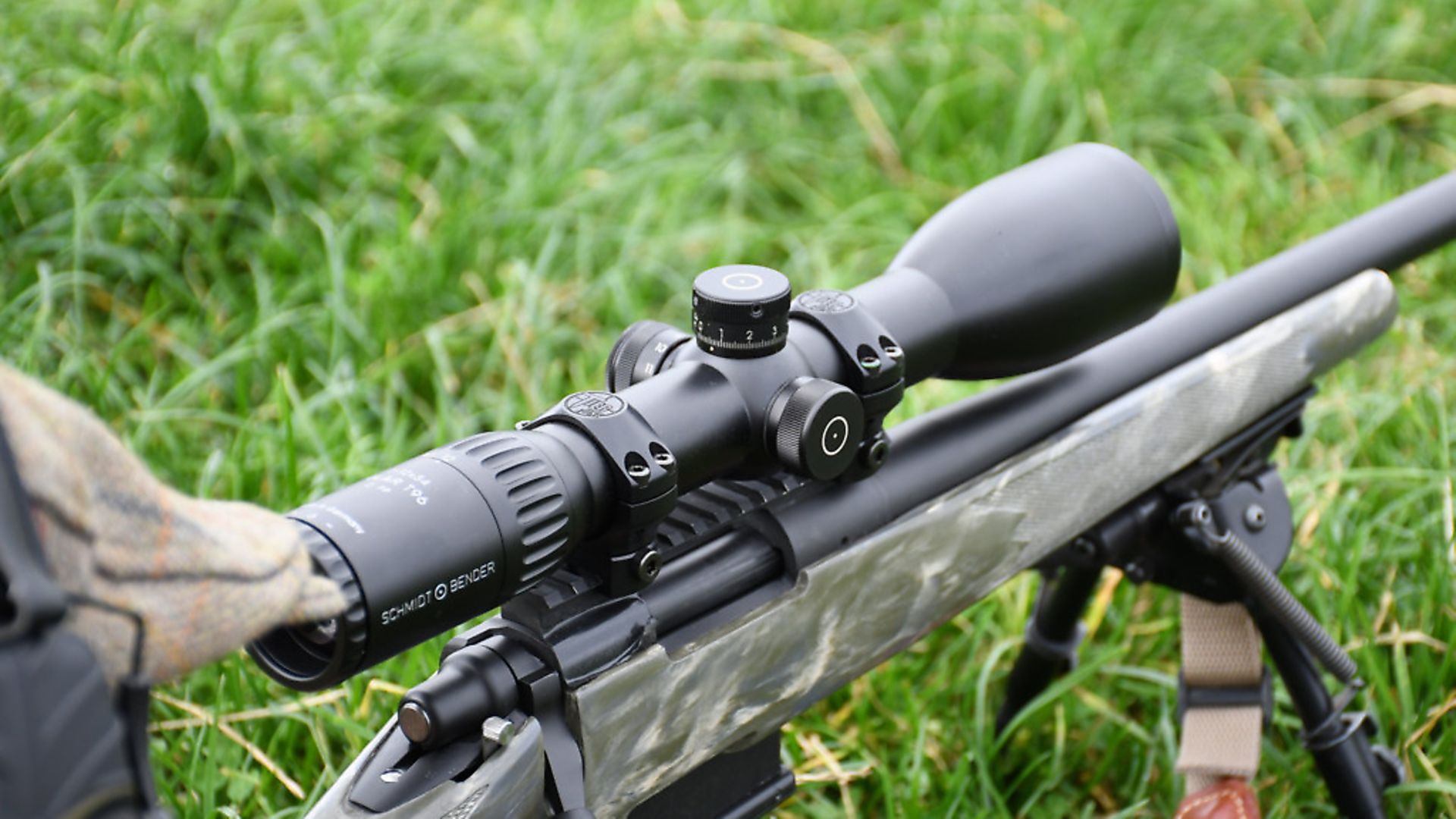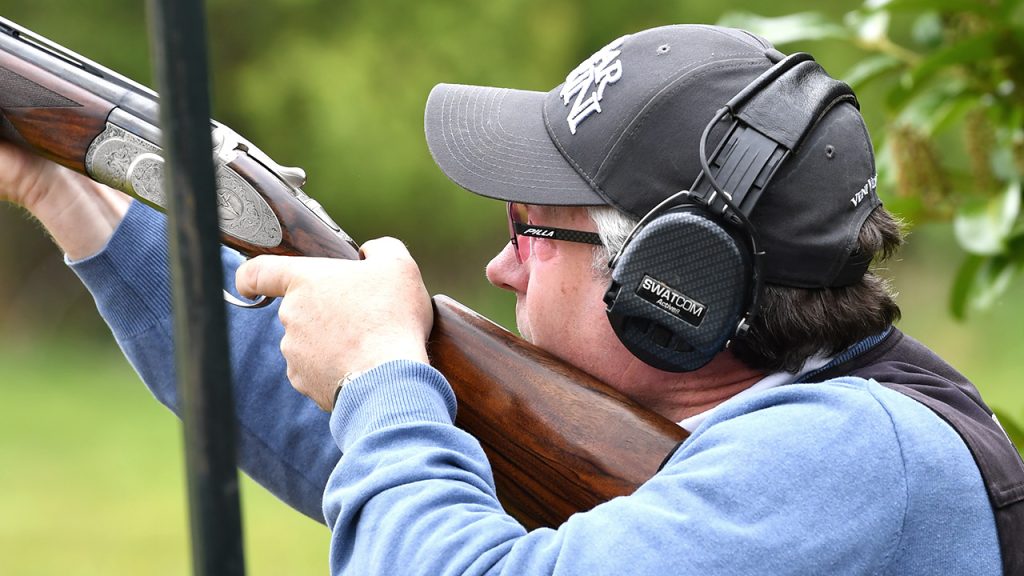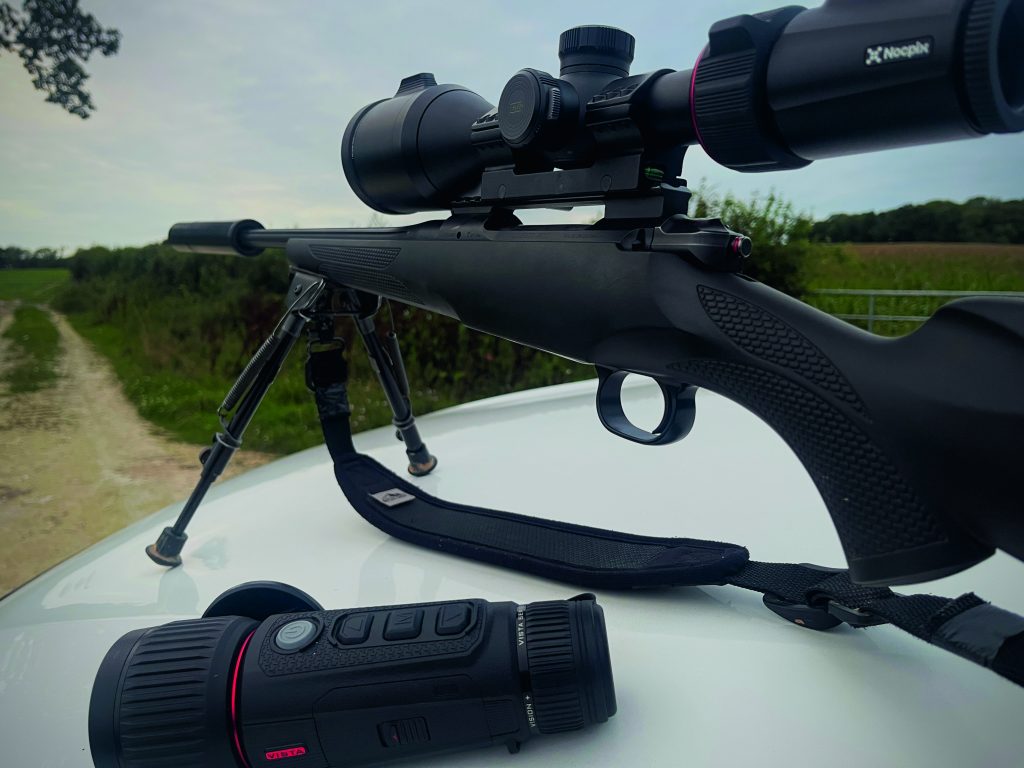Schmidt & Bender 3-12×54 Polar T96 Riflescope – tried & Tested

The Scmidt & Bender 3-12×54 Polar T96 riflescope claims impressive light transmission… Chris Parkin tests it out in the field and on the range
Schmidt & Bender’s T96 riflescope hit the market a couple of years ago with the 96% being a direct statement of the highest ‘light transmission percentage’ figure on the market, theoretically outpacing the Zeiss Victory HT with its seemingly old news 95%. I have been waiting all this time to see one and when it finally turned up I couldn’t wait to get out with it.
I’m not really one to believe in marketing hype, and the simple fact is that calculating light transmission isn’t an exact science. Light waves travel in many colour spectra that can be focused on (excuse the pun) to appeal to sporting shooters, with low light capability that is often at odds with the best daytime performance.
So many people get carried away with glass quality alone, but the multi-layer coatings often demoted to a specification list are key factors, and a bit of a hidden mystery for the optical manufacturers to keep secret – it is their desired blend of metallic vapours deposited on the glass that can alter the balance of the greens and blues passing through the glass to tailor its image to something the rods and cones in a human eye can compute. Are we talking a percentage of full daylight in sunny conditions at noon, or the brightest glass in those critical last few minutes of dusk?
Scopes are very hard to review side by side on rifles due to the factors of eye relief, exit pupil and eyebox versatility. The easiest way is to have them taken off the rifle as you can have more immediate swap overs from one to the next, in order to judge what you can or cannot see. It is quite a subjective test.
The Polar is a one-piece, 34mm tube that allows more space for the internal lenses and mechanics, and physical space for the lens packages to move around for both zeroing and longer-range optimisation. So, for a start, is it fair to compare it against a 30mm adversary?
Also, the 54mm objective lens is technically smaller than a 56mm unit, which equates to a 0.8% smaller cross-sectional area for light to enter – but what does this mean in use?
The Polar features all the mod-cons of illumination, compact size, weight and, most fashionably, an easily adjustable BDC elevation turret to quench the thirst for those wishing to extend their shooting ranges.
Schmidt’s matt black tube finish is exquisitely burnished in manufacture for a silky texture that shrugs off dirt and stains, including those grainy, dusty marks from the skin on your fingertips. The turrets are equally well displayed. Both windage and elevation show 1cm at 100m clicks, and elevation runs to 9.8 mRad or 98 1cm@100m clicks up from the zero stop so you will never get lost.
A locking lever sits to the front left of this knurled dial, with tactile clicks and easy operation wearing gloves to keep settings locked if you desire, but it’s discreet enough to forget about, silent in use, and the turret certainly doesn’t exhibit any desire to be easily nudged and misadjusted.
Windage on the right side is a capped dial displaying a small indicator window within its circumference to show roughly where in the travel range you are after zeroing. It’s not the kind of dial you will be adjusting to make windage corrections in the field, and I think that is an appropriate factor for a hunting scope. The left side of the saddle shows illumination controls that light just the centre flash dot of the No.4-style reticle with a zero stop.
Parallax is fixed at 100m with no further adjustability, but again this suits the intended hunting ethos of the scope and, at very close range, you can lower the magnification to retain focus. Parallax is very misunderstood and often worried about out of context.
The reticle is in the second focal plane and therefore of constant size as magnification is altered on the equally slickly-machined collar about the ocular body. Eye relief of 90mm remains constant with understandably diminishing exit pupil size, but no specific steps in the generally diminishing brightness as it is increased. Accessibility of the eye box is versatile and perfectly suits the needs of the rifle likely used with it – as well as its recoil. Just 10mm more of eye relief from scopes that seem to favour the US market can soon cause problems on European rifles with smaller actions.
Four reticle options are available which give a versatile crisp aiming dot at low magnification in low light with a maximum exit pupil size of 12mm, and field of view as wide as 12.5m at 100m. These retain enough diminutive precision for longer shots on small targets at 12x magnification, easily quarter smaller quarry, and enable precise placement on larger game.
The coatings on S&B glass are never disappointing, and regardless of the marketing focus on that 96%, the image is of the highest order with crisp resolution, sharp focus, a flat field of view and no chromatic aberration. I found colour reproduction a little stark and white, without some of the warmth seen elsewhere, but this is perhaps a factor of the ultimate transmission and I cannot deny that, even in daylight, the image stands apart from the 92% clan. I definitely want to run a back-to-back test with a Zeiss Victory.
I used this Polar on my vermin rifle out to ranges beyond 500m on targets, and on quarry out past 200m, in most light conditions through to total darkness, and it never let me down. The easiest judge of its quality is that it actually seems closer to the binoculars I use, as you can generally see further with binoculars than you can clearly aim on target through most scopes. This is still true of this scope but it’s the closest I have seen in dusky conditions all the way to full darkness.
The scope is also available with its reticle in the first focal plane, although it’s one of the few occasions where I wouldn’t desire such an option – I like the set-up just as it is and, to be honest, what’s the point of FFP unless you are measuring targets and aiming off or corresponding with your dialled corrections?
You can also have counter-clockwise rotation on the mechanics, which is a bug bear of the whole industry as those of us with multiple optics always have one or two that go the ‘wrong’ way to our preferred favourites.
As well as late-night vermin control out to 200m, the scope enjoyed a day on the range where its full range of adjustment and dialling capabilities were stretched. I had no doubts about the mechanical capabilities of the scope in any respect. The clicks matched my well-proven ballistic data for this calibre, with perfect return to zero. The zero stop is easy to set up, following the instructions and slackening the turret cap with an Allen key, and in poor light conditions it was quite possible to count clicks using the tactile detents, as well as the logically indicated visual 1cm/0.01mRad click markings.
Overall, I was impressed with the Polar. Glassware and optical image quality is so hard to differentiate at the top end, but mechanics are easier to pick fault with and none were found here. Is it the brightest? Well, that is very hard to scientifically determine, given the variety of light conditions hunters encounter with low sun, moonlight and atmospheric variables all altering colours and transmission of light before it even gets through the objective lens.
It is certainly a scope to which I will turn for more testing. S&B have certainly gained my confidence to explore the limits of the scope, with no awkward and possibly confusing zeroing and adjustment drills, so I intend to bolt it in a triple setup alongside a Victory and something of the closest specification I can get in the 92% envelope, a 30mm tube and 56mm objective.
TECH SPECS
Weight (g) – 674
Length (mm) – 358,3
Tube diameter (mm) – 34
Magnification – 3.0-12.0x
Objective lens diameter (mm) – 54
Field of view (m) – 12.5 – 3.1
Exit pupil (mm) – 12.0 – 4.5
Eye relief distance (mm) – 90
Twilight factor – 12.7 – 25.5
Transmission – 96
Focal plane – 1. o. 2.
Diopter – -3 to +2
Adjustment – Posicon o. ASV HS
Adjustment value / Click – 1cm / ¼ MOA
Elevation (Turret) – 100 cm/100m 25 MOA/100m
Windage (Turret) – ± 50 cm /100m ± 12 MOA/100m
Parallax adjustment – 100 m fixed
Illumination – Yes
Waterproof (mbar) – 300
Function – -25 to 55
Turret Types – cw/ccw
Colors – Black
Reticles – L7, L4 (1. BE), D7, D4 (2. BE)
CONTACT: http://www.schmidtundbender.de/en/home.html Phone +49 (0) 6 40 9 / 81 15 – 0 for your nearest UK dealer
RRP: £1,952.42 at current exchange rate
ALSO USED WHEN TESTING:
Tier-One 34mm Picatinny Scope rings www.tier-one.eu 01924 404312
Related Articles
Get the latest news delivered direct to your door
Subscribe to Rifle Shooter
Elevate your shooting experience with a subscription to Rifle Shooter magazine, the UK’s premier publication for dedicated rifle enthusiasts.
Whether you’re a seasoned shot or new to the sport, Rifle Shooter delivers expert insights, in-depth gear reviews and invaluable techniques to enhance your skills. Each bi-monthly issue brings you the latest in deer stalking, foxing, long-range shooting, and international hunting adventures, all crafted by leading experts from Britain and around the world.
By subscribing, you’ll not only save on the retail price but also gain exclusive access to £2 million Public Liability Insurance, covering recreational and professional use of shotguns, rifles, and airguns.
Don’t miss out on the opportunity to join a community of passionate shooters and stay at the forefront of rifle technology and technique.





